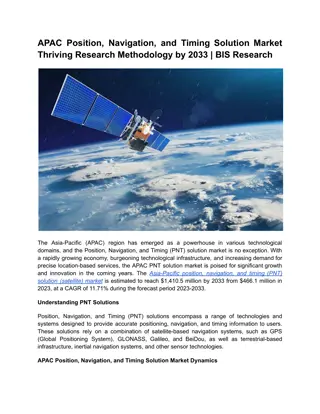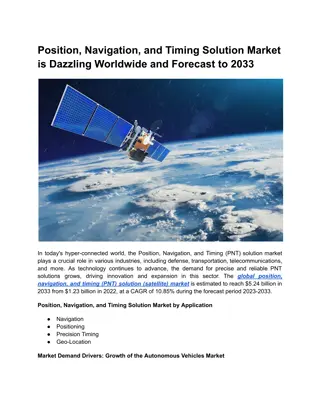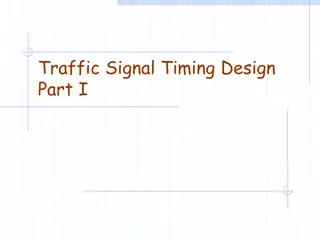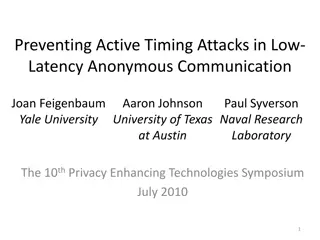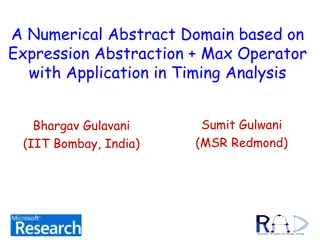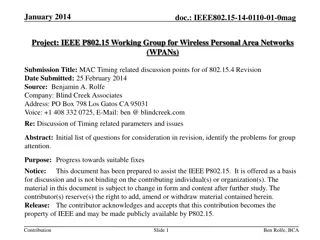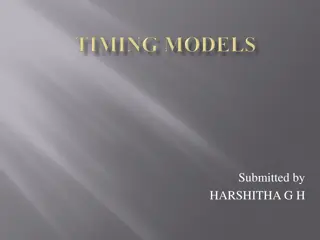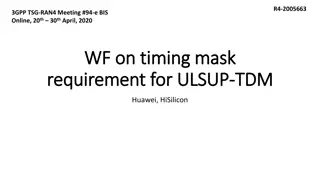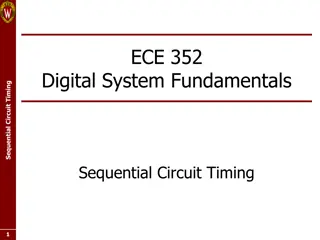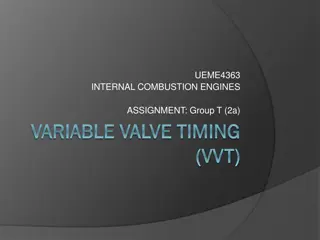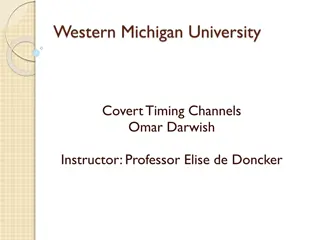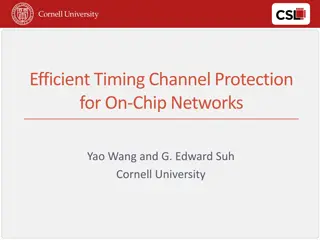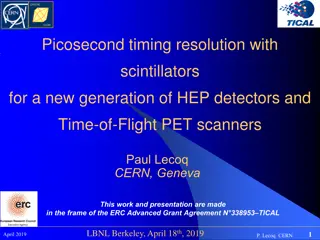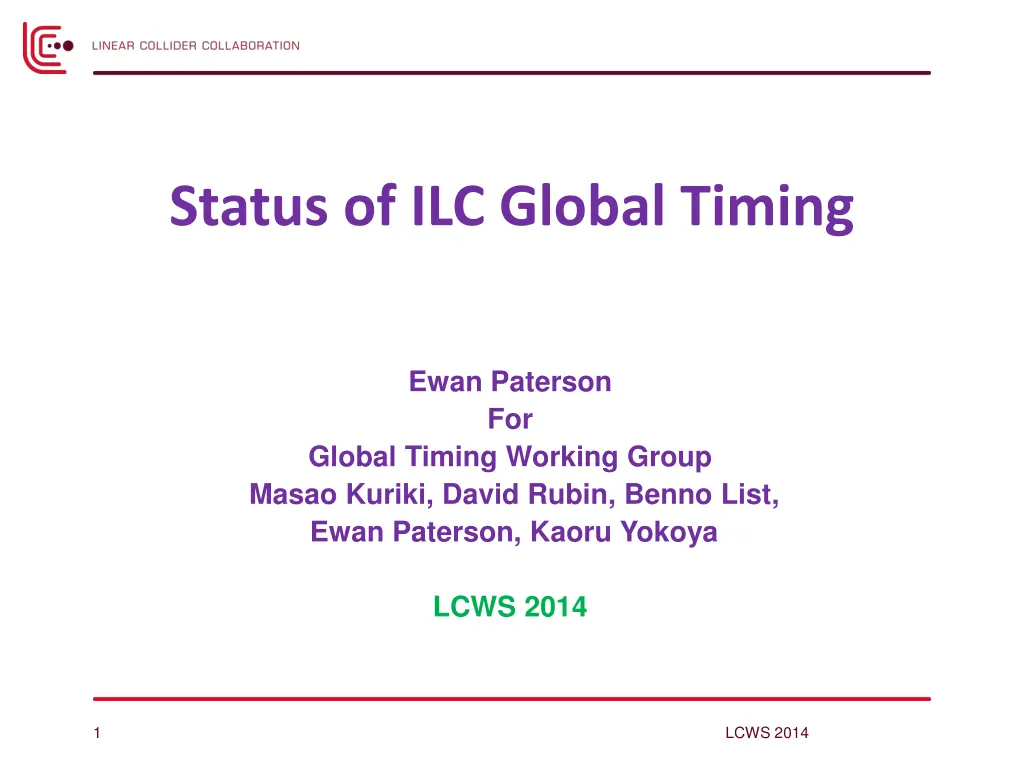
Global Timing Challenges at ILC
Explore the global timing challenges faced by the ILC, focusing on the production of positrons, beam collisions, and the need for a precise timing system. The report touches on the interplay between the different components and the proposed solutions to ensure smooth operations at the ILC facility.
Download Presentation

Please find below an Image/Link to download the presentation.
The content on the website is provided AS IS for your information and personal use only. It may not be sold, licensed, or shared on other websites without obtaining consent from the author. If you encounter any issues during the download, it is possible that the publisher has removed the file from their server.
You are allowed to download the files provided on this website for personal or commercial use, subject to the condition that they are used lawfully. All files are the property of their respective owners.
The content on the website is provided AS IS for your information and personal use only. It may not be sold, licensed, or shared on other websites without obtaining consent from the author.
E N D
Presentation Transcript
Status of ILC Global Timing Ewan Paterson For Global Timing Working Group Masao Kuriki, David Rubin, Benno List, Ewan Paterson, Kaoru Yokoya LCWS 2014 1 LCWS 2014
THE PROBLEM The damped electron beam is used to produce the positrons via photons from an undulator. Lower power on target and polarized E+ (This millisecond long train of several thousand electron bunches continue on to the interaction point where they collide with the now damped positron bunch train produced 200 msec earlier on the prior machine cycle. These damped positron bunches travel 30 km from the DR to their collisions with the electrons at the IP. The low beta IP collision point is 300 microns long. We cannot design, build, or measure the ILC to ?? ? accuracy. The Path Length, or Transit Time through all the ILC systems are now coupled (by first bullet ), We need a Global Timing System 2 LCWS 2014
The Global timing constraint Positron bunches are produced from their partner electron bunches -> new positron bunches are injected into DR while old (damped) positrons are still in Simplest solution: each e+ bunch goes into exactly the same bucket that was occupied by colliding e+ bunch e+ bunch is ejected from DR, travels down RTML and Main Linac, while empty bucket left by e+ bunch rotates around DR several times Partner e- bunch creates new e+ bunch e+ arrives exactly at DR in time to fill rotating void bucket, while e- and e+ bunches collide at IP
The numerical condition Length (DR ejection -> IP) length (target -> IP) + length (target -> DR injection) = n * DR circumference For a given DR circumference: ML length is quantized by DR circumference (~1.5km: 35GeV with TDR gradient).
Report of RDR Task Force on Timing in 2005 https://ilc-edmsdirect.desy.de/ilc- edmsdirect/file.jsp?edmsid=D00000000829945 This was the first complete report on the Global Timing Issues of the ILC that because the E- produce the E+ and collide with those from the previous machine cycle, the DR circumference, Harmonic number, Length of linacs and other transport lines, are all coupled. In simplified form To maintain flexibility in bunch patterns in operation of the ILC, the difference in path-length, L, between target and IR for the E+ and E-, should be an integer number of the DR circumference. At the time of the RDR in 2006, L was 2.6 km! To complete the RDR a task force proposed (a change request) a 1.2 km extension of the E+ linac including a path-length changing trombone. Not very practical and rejected! 5 LCWS 2014
FROM THE RDR TO THE TDR There have been many changes in the ILC design since the RDR and throughout this evolution we have tried to keep track of L. DR from 6 km circumference to 3.2 km. E+ source to end of Linac and totally different central region layout including one IR with push pull detectors. As of May 2014 ( AWLC 14, Benno List) the FINAL TDR lattice and layout gives L = - 294 meters NOW WE HAVE THE FINAL LATTICES AVAILABLE IN THE TDR ??? AND CLOSE TO THE FINAL CIVIL FACILITES LAYOUT? WE HAVE TO START FINALIZING THE GLOBAL TIMING SYSTEMS BOTH PASSIVE AND ACTIVE, and they are,>> Final machine layout and path-length correction systems to correct both design/construction and time varying errors. 6 LCWS 2014
There are 3 different scales to this E+/- path difference problem that have been studied Needs final site and design layout and is required soon. Need to check present lattice designs for completeness and propose the lattice and layout change options to correct path length, L 0. This must be compatible with any staging or upgrade scenarios! POSSIBLE LENGTH SCALE L < 200 m ? Needs study of Survey and Alignment above and below ground and used during design, construction, installation and commissioning. Will need best estimate of the absolute accuracy of path lengths after installation and some adjustment method during commissioning with two beams? How conservative sigma? 3 or 5? L < 0.5 m L 1 mm Need study and estimate of variations in path-lengths during operation, both magnitude and timescale, hours,days,years. Automatic fine path length adjustment system ? LCWS 2014 7
POSSIBLE LARGE SCALE CORRECTIONS These require changes in basic design parameters such as :- Damping Ring Circumference Length of linacs and their tunnels Length of injection/extraction lines and DR location transverse to linac axes Length of BDS tunnels THESE ARE NOT INDEPENDENT OF ONE ANOTHER THEY HAVE VARYING DEGREES OF IMPACTS ON PRESENT DESIGNS, CIVIL ENGINEERNG AND SITE LAYOUT. LET US LOOK AT SOME EXAMPLES 8 LCWS 2014
Calculation for the TDR baseline (Asian site) Undulator Photon Transport UPT (BEGEDOGL -> PTARGET) Positron to DR injection PTARGET -> MPDRINJ INJ straight Photons/positrons to z=0 Electron dogleg EDOGL (BEGDOGL -> TPS2BDS) Electron BDS to IP Electrons to z=0, i.e. IP Difference Positrons-Electrons to z=0: Positrons to DR extraction Positron RTML (DKS version) ML length (DKS) Positron BDS to IP 372.0 2232.4 89.3 2693.7 -423.6 -2253.5 -2677.1 16.6 107.9 15993.0 11071.7 2252.6 Positron Path 29425.2 Total Sum 9 / 10*DR circumference Mismatch (m) 29441.8 32386.8 3238.7 29148.1 -293.6 2945.0
Examples of Changing DR Circumference and Linac Lengths Circumferenc e (m) 3238.7 3646.4 3692.1 3286.6 3736.8 3739.6 3747.9 3339.2 3758.0 3769.1 3773.7 3777.8 3799.1 3400.1 3404.7 3831.8 3864.1 3458.2 3508.0 3568.0 3238.7 N*circumference (m) 29148.1 29171.2 29536.5 29579.8 29894.4 29916.5 29982.9 30053.0 30064.1 30152.7 30189.6 30222.8 30392.5 30601.0 30642.5 30654.5 30912.8 31124.0 31572.3 32111.9 32386.8 h n 9 8 8 9 8 8 8 9 8 8 8 8 8 9 9 8 8 9 9 9 10 Mismatch (m) -293.6 -270.6 94.7 138.1 452.6 474.8 541.2 611.3 622.3 710.9 747.8 781.0 950.7 1159.2 1200.7 1212.7 1471.0 1682.2 2130.5 2670.2 2945.0 7022 7906 8005 7126 8102 8108 8126 7240 8148 8172 8182 8191 8237 7372 7382 8308 8378 7498 7606 7736 7022 Linac length changes (mismatch) that go with different DR circumferences and satisfy the TDR options such as flexible bunch patterns, low and high power operation and energy staging. They have a very large range of impacts on the ILC systems layout.
IMPACT of TWO DIFFERENT POSSIBLE CHOICES In the TDR design the DR has a harmonic number of 7022 and therefore a circumference of 3238.7 m The path-length correction required is 293.6 / 2 meters when you change the tunnel length where e+ beams are both going and coming. If we can reduce the length of the BDS by this 147 m at the end of the E+ linac and beginning of the BDS we would have a rough solution for the global timing. This is under study by the BDS group. If we change the DR harmonic to 7126 as highlighted in the table then we have another case which would have minimal impact on the TDR design. The DR circumference would increase by 47.9 m. Stretch the race track with 12 m inserts at the ends of the straight section, leaving the injection/extraction geometry as is, and the path length correction becomes +138.1/ 2 m. This added length could be anywhere along the linac and probably should be also added to the e- linac. Something would quickly fill the 70 m stretches of the linac tunnels! Other combinations with much greater impact on the present design are possible but are not being considered as required by Global Timing
How accurately can we build and measure 30 km path-length An important length scale for timing is DR RF wavelength, = 0.461 m and for a repetitive self replicating timing solution for any bunch train pattern we need 10*-6 to 10*-7, or 30 to 3 mm accuracy. Consulting with survey and alignment experts and looking at recent neutrino beam studies of long distance measurements we believe that the survey accuracy will be in this range. The state of the art above ground networks can achieve mm accuracy over 30 km but transferring this underground to a new tunnel network is more difficult. Varying air temperature, rock rebound, concrete curing, mixed occupancy of the tunnel might deteriorate accuracy to the 10*-6 level until everything has come to operating conditions. By that time changing the path becomes more difficult so we must be conservative. What other factors could change the as built length? To evaluate timing correction ranges and techniques we used large errors up to a few meters with desired goal of a few millimeters or a small fraction of /2
A SECOND CONSTRAINT The constraint of having this path length difference L equal to a multiple of the DR circumference is the coarse correction and could leave some ambiguity in the bunch pattern and e+ injection efficiency over the few thousand bunches. To replicate exactly the chosen pattern in the DR s on every cycle (this may become important in the abort/recovery sequences driven by machine protection) one needs the additional constraint. The path length between the distance an e+ travels from target to DR injection less the distance the e- travels from target to the IP should be a multiple of /2 and small, a few mm. Changing the average DR circumference between injection/ extraction cycles as shown in next slide can work for L from a few meters down to /2 Getting from /2, or 230 mm to say 1 mm, requires some inserted path length change for the E+, of that size,.There is presently room, after the E+ source systems for an insert of 400 m length. See reference- https://ilc-edmsdirect.desy.de/ilc-edmsdirect/file.jsp?edmsid=D00000001081595,A,1,2
DR Circumference Change Simulations show that this works for P or L of +/- several meters, see presentation by D. Rubin, ECFA meeting at DESY, 2013
E+ Path Length Change ONCE BOTH TIMING CONSTRAINTS ARE MET DURING COMMISSIONING, WE WILL BE AT THE SUB-MILLIMETER LEVEL OF RESIDUAL CORRECTION. AT THIS LEVEL WE HAVE SEVERAL OPTIONS FOR FINE TUNING WHICH INCLUDE SYSTEMS SUCH AS DR CIRCUMFERENCE AND RF PHASE, E+ INSERT, BUNCH COMPRESSORS, LINAC PHASES, THIS REQUIRES STUDY WITH FEEDBACK AND CONTROL PLANNERS. TDR USES THE BUNCH COMPRESSORS. ONE COULD SIMPLIFY THE E+ INSERT FROM BEING A COMPLEX WIGGLER OR CHICANE THAT IS VARIABLE, TO THE OTHER EXTREME OF A REALIGNMENT OF COMPONENTS TO CHANGE THE PATH LENGTH. A ONE WAVE LENGTH WIGGLE. THIS WOULD BE DONE DURING COMMISSIONING THEN LEFT FIXED. THIS STUDY HAS NOT YET BEEN COMPLETED AND WILL BE AFFECTED BY HOW MUCH VARIATION IN PATH LENGTH OCCURS OVER TIME AND WHERE IN THE 30 km IT IS CHANGING. THIS IS THE NEXT TOPIC.
L Variations over Seconds to Minutes Path Length variations at this speed would indicate changes in some ILC systems from human tuning or hardware malfunction. If larger than 1 mm the hardware needs to be fixed! If 1 mm or less then the timing feedback system should be used to correct . The phase between the E- and E+ compressors is probably the feedback system of choice, see TDR, and has a tolerance of 0.24 degrees for 2 %luminosity loss or 150 micron L. From TDR
L Variations over hours or days This is the most common correction time frame for the daily tidal earth moon affects and are estimated to be small, (< 1 mm ), reproducible and are easily corrected. The DR already has a 100 m long wiggler in the design which can correct the DR circumference by +/- 3 mm and maintain it constant on this time scale. Longer term effects are more difficult to estimate. Changing tunnel wall temperatures, changes in ground water level, or relaxation of strain in the base rock after construction are thought to be small, < 1 mm, but should be studied by experts, but not a show stopper!
SUMMARY & NEXT STEPS The ILC Global Timing System has been studied but to finalize the design and therefore the final CFS layout of the ILC we need to :- ITERATE WITH SYSTEMS LEADERS, TECHNICAL BOARD, CHANGE CONTROL BOARD TO GET A NEW. ADI Team? Final lattice with an overall length accuracy of better than 100 m. Final timing correction proposed system A CHANGE CONTROL REQUEST FOR NEW ILC LAYOUT? ADI Team?

